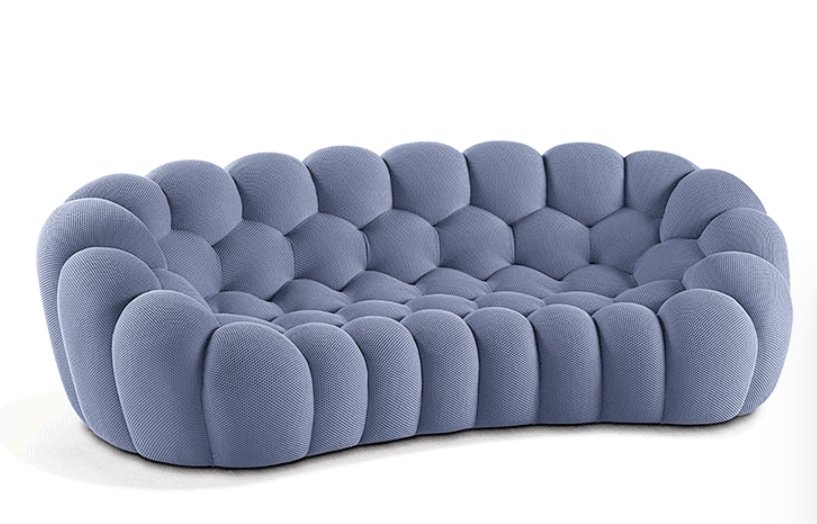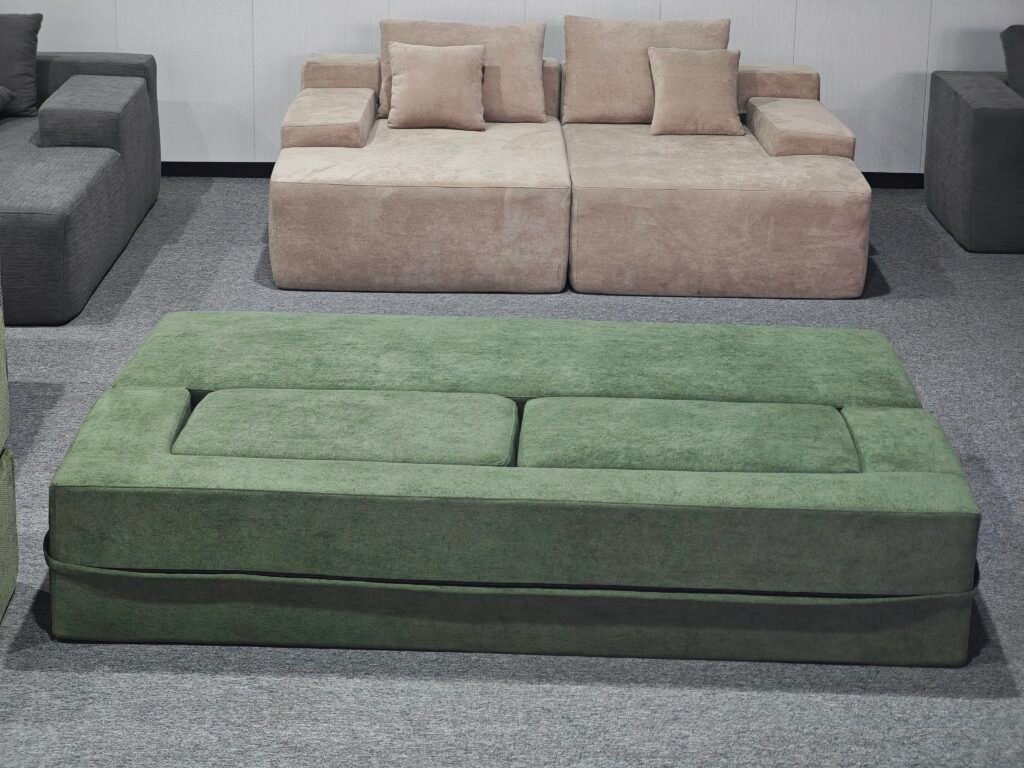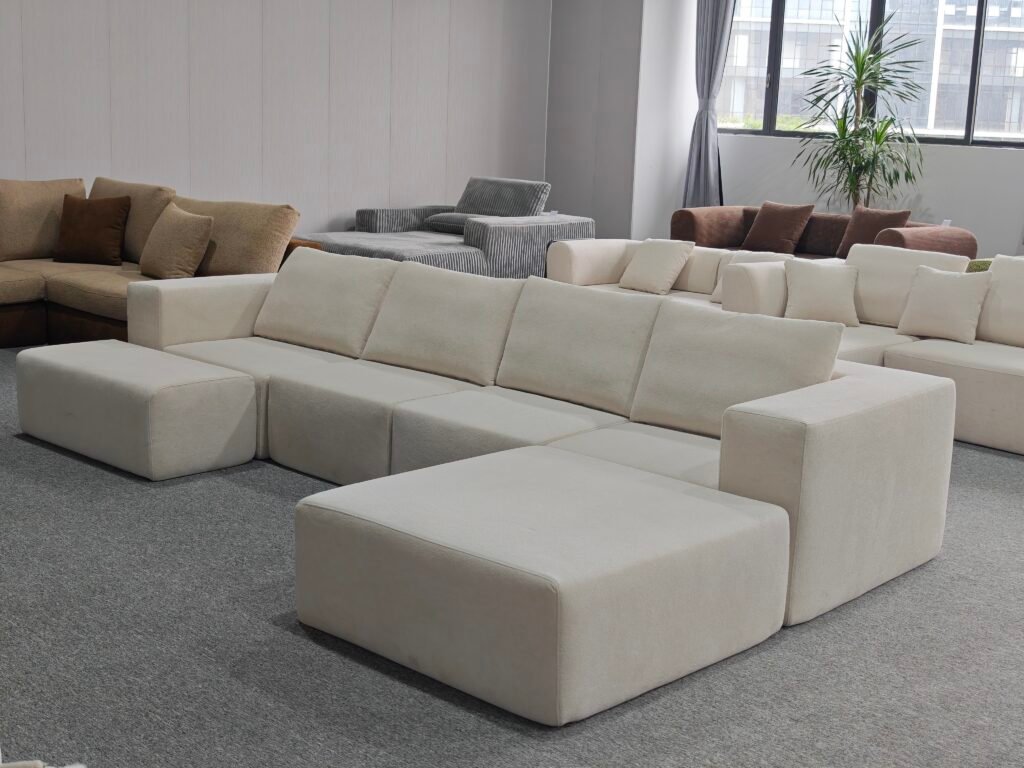Introduction
With the rapid growth of global e-commerce and continuous innovation in the furniture industry, compressed sofas have emerged as a revolutionary solution for furniture transportation. By using vacuum compression technology, compressed sofas drastically reduce their volume, significantly lowering shipping costs and storage space requirements. This innovation not only improves logistics efficiency but also offers environmental benefits. However, international shipping of compressed sofas involves complex regulations, customs policies, and packaging standards. Distributors who are unaware of these requirements risk shipment delays, fines, or returns, which can damage their reputation and customer satisfaction.
This article provides an in-depth exploration of shipping regulations related to compressed sofas, helping distributors fully understand the legal, packaging, customs, and cost management aspects necessary for smooth global operations.


What Are Compressed Sofas and Their Advantages?
Compressed sofas are furniture products made from high-resilience foam and modular designs, vacuum-sealed to reduce their size dramatically. Compared to traditional sofas, compressed sofas can reduce their shipping volume by 70% to 80%, leading to substantial savings in transportation and storage.
Key advantages of compressed sofas include:
- Significant reduction in shipping costs: Smaller volume means more units per shipment.
- Easier handling and storage: Compact packaging simplifies warehouse management.
- Environmental friendliness: Less packaging waste and fewer shipments reduce carbon footprint.
- Customer convenience: Modular design allows for easy assembly and customization.
Importance of Shipping Regulations for Compressed Sofas
Shipping regulations impact every stage of the supply chain for compressed sofas:
- Customs clearance: Compliance ensures timely clearance and avoids penalties.
- Product safety: Regulations protect end-users and reduce liability risks.
- Cost control: Understanding tariffs and documentation prevents unexpected expenses.
- Brand reputation: Reliable compliance fosters trust among distributors and customers.
Ignoring or misunderstanding these regulations can lead to shipment delays, additional fees, or even confiscation of goods.
International Shipping Regulations Relevant to Compressed Sofas
International Standards
- ISPM 15 (International Standards for Phytosanitary Measures No. 15): Requires that all wood packaging materials (pallets, crates) be heat-treated or fumigated to prevent pest transmission. This is mandatory for shipments crossing international borders.
- Material Restrictions: Some countries restrict or regulate certain materials used in sofas, such as specific types of leather, foam chemicals, or treated wood, due to environmental or health concerns.
- Safety Certifications: Upholstered furniture often must comply with fire safety standards, such as the US CPSC regulations or EU EN 1021, to ensure consumer protection.
Country-Specific Regulations
Different countries impose specific requirements that distributors must consider:
| Destination | Key Regulatory Areas | Example Requirements |
|---|---|---|
| USA | CPSC, Flammable Fabrics Act, CPSIA | Fire resistance, lead content limits, certification for children's products |
| European Union | REACH, EN 1021, CE Marking | Chemical safety, fire safety, product labeling |
| Australia | AS/NZS 3744, ISPM 15 | Fire safety standards, wood packaging treatment |
| Middle East | Import bans, customs inspections | Material declarations, compliance with local standards |
| China | GB standards, ISPM 15 | Product safety, wood packaging treatment |
It is essential to verify the latest regulations for each destination country as they are subject to frequent updates.
Packaging and Labeling Requirements
Packaging Standards
- Vacuum-sealed bags: Use multi-layer, puncture-resistant vacuum bags to maintain compression and protect the sofa during transit.
- Outer cartons: Heavy-duty, moisture-resistant cartons are necessary to withstand handling and environmental conditions.
- Palletization: Cartons should be stacked evenly on pallets, secured with straps or shrink wrap, and comply with height and weight limits for transport safety.
Labeling Requirements
- Product identification: Clear labels with product name, SKU, and handling instructions.
- Country of origin: Mandatory for customs clearance.
- Safety warnings: Include any required warnings such as flammability or choking hazards.
- ISPM 15 marking: Required on wood packaging to certify pest treatment compliance.
Documentation Required for International Shipping
Accurate and complete documentation is crucial for customs clearance and legal compliance:
- Commercial Invoice: Details transaction information, product description, value, and payment terms.
- Packing List: Lists all shipped items, quantities, weights, and dimensions.
- Bill of Lading or Airway Bill: Proof of shipment and contract with the carrier.
- Certificate of Origin: Verifies the manufacturing country.
- Fumigation Certificate: Required for wood packaging materials.
- Safety Compliance Certificates: Fire resistance, chemical safety, or other certifications as required by destination countries.


Customs Duties, Taxes, and Fees
Duties and Taxes
- Import duties: Calculated based on the Harmonized System (HS) code, typically HS code 9401 for sofas. Duty rates vary by country.
- Value-Added Tax (VAT) or Goods and Services Tax (GST): Applied in most countries based on the CIF (Cost + Insurance + Freight) value.
- Anti-dumping duties: Some countries impose additional tariffs on imported furniture to protect local industries.
Responsibility for Payment
- Incoterms: Define which party pays for shipping, insurance, and customs duties. Common terms include FOB (Free On Board), CIF (Cost, Insurance, Freight), and DDP (Delivered Duty Paid).
- Usually, distributors or importers are responsible for paying local duties and taxes upon arrival.
Shipping Methods and Cost Optimization
LCL (Less-than-Container Load) vs. FCL (Full Container Load)
- LCL: Suitable for smaller shipments (2–13 cubic meters), where cargo shares container space with other shippers. More flexible but may have longer transit times.
- FCL: Recommended for large orders (over 14 cubic meters), offering lower per-unit costs and reduced handling risk.
Cost Factors
- Volume and weight: Compressed sofas’ reduced volume significantly lowers shipping costs.
- Distance and destination: Longer distances and remote locations increase costs.
- Special handling: Services like white-glove delivery or inside placement incur additional fees.
Best Practices for Distributors
Pre-Shipment Preparation
- Verify regulations: Confirm all destination-specific shipping and safety requirements.
- Inspect packaging: Ensure sofas are properly compressed, sealed, and packed.
- Maintain accurate inventory: Keep detailed records of all shipped items.
During Shipping
- Partner with reliable couriers: Use logistics providers experienced in furniture shipping.
- Track shipments: Monitor shipment status and proactively manage delays.
- Communicate with customers: Provide clear delivery timelines and assembly instructions.
Upon Arrival
- Inspect goods immediately: Check for damage or missing items.
- Handle customs clearance promptly: Pay duties and taxes to avoid storage fees.
- Offer after-sales support: Assist customers with assembly and address any issues.
Common Challenges and Solutions
| Challenge | Solution |
|---|---|
| Customs delays | Provide complete and accurate documentation; consider pre-clearance |
| Packaging damage | Use robust packaging materials and trusted carriers |
| Unexpected fees | Clarify Incoterms upfront; estimate duties and taxes in advance |
| Regulatory changes | Stay updated on regulations; adjust processes accordingly |
| Environmental compliance | Adopt recyclable materials and eco-friendly foam to meet green standards |
Case Study: Modular-Sofas.com Shipping Workflow
Modular-Sofas.com, a leading compressed sofa factory, follows a rigorous shipping workflow to ensure compliance and customer satisfaction:
- Product Preparation: Sofas are vacuum-compressed, sealed in multi-layer bags, and packed in heavy-duty cartons.
- Documentation: Each shipment includes commercial invoices, packing lists, certificates of origin, and safety compliance certificates.
- Customs Coordination: The logistics team verifies destination regulations and prepares for customs inspections.
- Shipping: Orders are shipped via LCL or FCL based on volume, using trusted global couriers.
- Tracking and Support: Customers receive tracking information and after-sales support throughout the delivery process.
Key Shipping Regulations and Requirements by Region
| Region | Main Regulations/Standards | Documentation Needed | Special Notes |
|---|---|---|---|
| USA | CPSC, Flammable Fabrics Act, CPSIA, ISPM 15 | Invoice, Packing List, Compliance Certificates, Fumigation Certificate | Fire safety, lead content limits, wood packaging rules |
| European Union | REACH, EN 1021, CE Marking, ISPM 15 | Invoice, Packing List, CE Mark, Fumigation Certificate | Chemical safety, fire safety, VAT |
| Australia | AS/NZS 3744, ISPM 15 | Invoice, Packing List, Fumigation Certificate | Fire safety, wood packaging treatment |
| Middle East | Country-specific bans, ISPM 15 | Invoice, Packing List, Fumigation Certificate | Material declarations, customs inspections |
| China | GB standards, ISPM 15 | Invoice, Packing List, Fumigation Certificate | Product safety, eco-compliance |
Frequently Asked Questions
Q: What happens if my shipment is non-compliant with regulations?
A: Non-compliance can lead to customs delays, fines, shipment returns, or destruction. It can also damage your business reputation and result in higher costs.
Q: How can I estimate shipping costs for compressed sofas?
A: Shipping costs depend on shipment volume, weight, destination, and shipping method. Compressed sofas reduce volume significantly, lowering costs by up to 70–80% compared to traditional sofas.
Q: Are there environmentally friendly packaging options for compressed sofas?
A: Yes. Many manufacturers use CertiPUR-US-certified foam, recyclable vacuum bags, and biodegradable cartons to meet environmental standards and reduce waste.


Conclusion
Compressed sofas offer distributors a competitive advantage through cost savings, efficient logistics, and scalable inventory management. However, success in international shipping depends on strict compliance with shipping regulations, robust packaging, accurate documentation, and proactive communication with logistics partners and customers.
By following the guidelines and best practices outlined in this article, distributors can ensure smooth, compliant, and profitable operations in the global compressed sofa market.